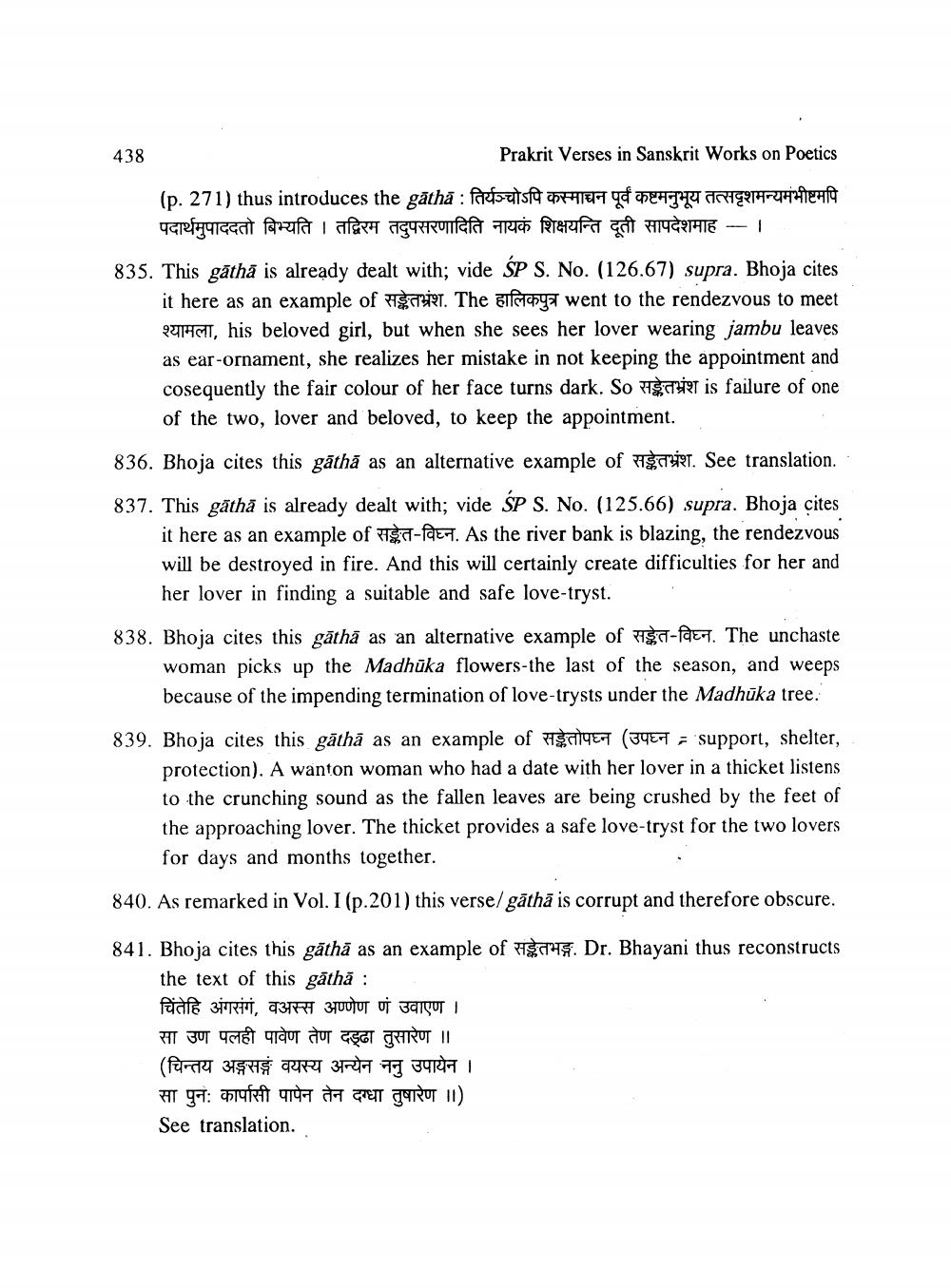________________
438
Prakrit Verses in Sanskrit Works on Poetics
(p. 271) thus introduces the gatha : Patutsta & REHTY TNT rument
पदार्थमुपाददतो बिभ्यति । तद्विरम तदुपसरणादिति नायकं शिक्षयन्ति दूती सापदेशमाह -- । 835. This gātha is already dealt with; vide ŚP S. No. (126.67) supra. Bhoja cites
it here as an example of सङ्केतभ्रंश. The हालिकपुत्र went to the rendezvous to meet CUMMI, his beloved girl, but when she sees her lover wearing jambu leaves as ear-ornament, she realizes her mistake in not keeping the appointment and cosequently the fair colour of her face turns dark. So it is failure of one of the two, lover and beloved, to keep the appointment.
836. Bhoja cites this gāthā as an alternative example of H
RT. See translation.
837. This gātha is already dealt with; vide SP S. No. (125.66) supra. Bhoja cites
it here as an example of 15a-faen. As the river bank is blazing, the rendezvous will be destroyed in fire. And this will certainly create difficulties for her and her lover in finding a suitable and safe love-tryst.
838. Bhoja cites this gāthā as an alternative example of $a-Pany. The unchaste
woman picks up the Madhūka flowers-the last of the season, and weeps because of the impending termination of love-trysts under the Madhūka tree.
839. Bhoja cites this gāthā as an example of $19E7 (39E17 - support, shelter,
protection). A wanton woman who had a date with her lover in a thicket listens to the crunching sound as the fallen leaves are being crushed by the feet of the approaching lover. The thicket provides a safe love-tryst for the two lovers for days and months together.
840. As remarked in Vol. I (p.201) this verse/ gāthā is corrupt and therefore obscure.
841. Bhoja cites this gāthā as an example of $45. Dr. Bhayani thus reconstructs
the text of this gātha : चिंतेहि अंगसंगं, वअस्स अण्णेण णं उवाएण ।
सा उण पलही पावेण तेण दड्ढा तुसारेण || (चिन्तय अङ्गसङ्गं वयस्य अन्येन ननु उपायेन । सा पुन: कार्पासी पापेन तेन दग्धा तुषारेण |) See translation.




